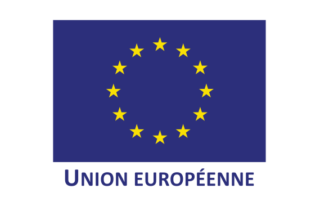Looking for Expert Assistance with Analyzing and Interpreting Your Data?
AltraBio is a trusted contract research company specializing in biological data analysis, helping you unlock the full potential of your cytometry, omics, and medical data. Using advanced statistical methods and artificial intelligence, we provide insights that drive innovation and decision-making.
We serve as a research and development partner for leading companies and university hospitals across various sectors, including pharmaceuticals, medical devices, diagnostics, and dermo-cosmetics.
Learn more about our services:
Funding
Testimonials
« Even in the age of generative AI, Altrabio’s two decades of expertise in maths, stats, biology, and medical science remain invaluable. They don’t just talk, they do. No flashy marketing, no inflated costs, just solid, thoughtful work from study design to actionable insights. A trusted partner, for twenty years, in a world full of noise. Highly recommend working with them to make real sense of your complex biomedical and omics data. »
« Supervised approach is really a mature approach, I think there is an absolute need for having this solution… »
« The quality of the results we got from AB was quite remarkable in the good »
« AltraBio is viewed as automating subject matter experts, with the ability to do the same work. It allows us to free up subject matter experts at scale so a subject matter expert doesn’t have to spend as much time doing gating or reviewing gatings, and it all hinges on the quality that they provide. So for us, that’s the biggest selling point; the quality allow us to be able to say, OK this technology is almost as good as subject matter experts in this domain, and the pricing and the speed make it such that it becomes a feasible solution for us to say we can free up the scientists to do other things and this part can be handled by AltraBio. »
« Exceptional »
« We really appreciate AltraBio because they provide one-stop full service, so we don’t need to worry about a lot of former problems, and also quality of results »
« Top of the field »
« They are highly efficient and agile; you won’t interact with much people, so they are quick to respond and provide high-quality service »
« If there is some problem, or troubleshooting is necessary, or some change in the workflow, they are very flexible.»
« Automated gating is there… In 2018, when automated gating was discussed at CYTO, some people stood up and said: “No! This is not going to work. Gating has been done by scientists & experts, and you can’t just put a computer to do their job.” We know now that it is not true because the Altrabio’s solutions are now doing it. It is pretty amazing. »
« This is accurate; we can use it at scale, so we don’t have to do the manual gating. »
« They do that extra bit of QC on their hand; they also check the transfers and put that extra effort in to make sure that what we do is accurate »
« The work we do with AltraBio is a partnership. I’ll make an example of the last analysis that we did; there were some timelines that needed to be met and they stepped in and said “OK we‘ll get this done in a few days”, not in a week, not in a month … When you have that relationship, when you understand the value and you understand the timelines of the customer, that felt really like a partnership and I think we’re heading in that direction… »
« They do cutting-edge work, we clearly like the innovation part »
« In clinical trials, we could get thousands of samples for different panels… The scale is clearly so big, not many companies can do this kind of work in production mode, on the labor scale »
« They fit clients’ need. »
Latest Publications
2024
Exogenous IL-2 delays memory precursors generation and is essential for enhancing memory cells effector functions Journal Article
In: iScience, vol. 27, no. 4, pp. 109411, 2024, ISSN: 2589-0042.
2023
In: Transfusion Clinique et Biologique, vol. 30, iss. S1, pp. S147, 2023.
Chronological aging impacts abundance, function and microRNA content of extracellular vesicles produced by human epidermal keratinocytes Journal Article
In: Aging (Albany NY), vol. 15, no. 22, pp. 12702–12722, 2023, ISSN: 1945-4589.





